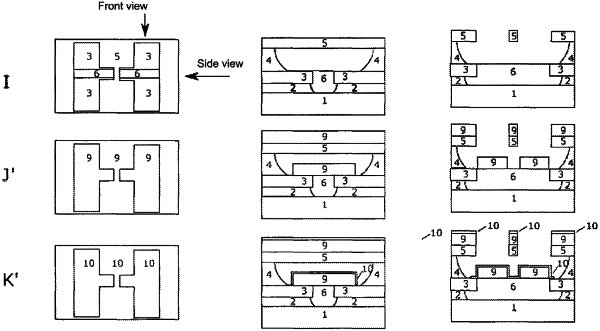| CPC H10N 60/0912 (2023.02) [G06N 10/00 (2019.01); H10N 60/12 (2023.02); H10N 60/805 (2023.02); H10N 60/83 (2023.02)] | 5 Claims |

|
1. A hybrid structure comprising at least one structured Majorana material;
at least one superconductive material arranged on the structured Majorana material; and
a passivation layer,
wherein the structured Majorana material has a wire-shaped design with a length between 0.1 and 100 μm, a width between 10 and 200 nm, and a layer thickness of between 0.2 and 260 nm,
wherein an interface between the structured Majorana material and the at least one superconductive material arranged thereon is free from contaminations, and
wherein a surface of the structured Majorana material is completely covered either by a material which is capable of forming a native oxidation layer, a superconductive material, or the passivation layer.
|